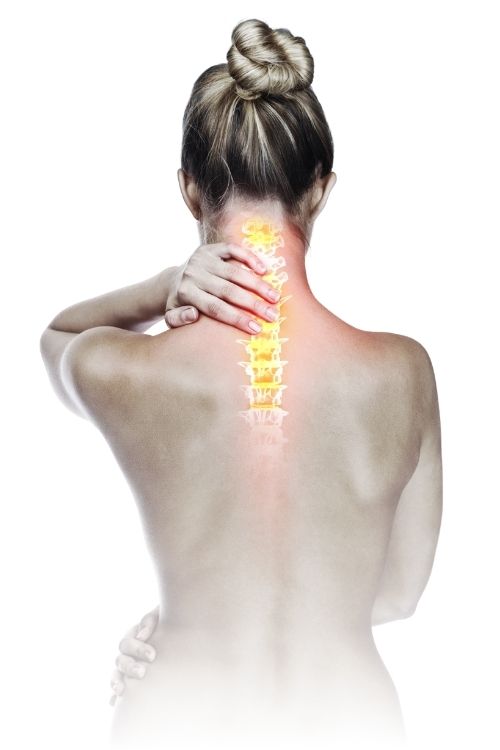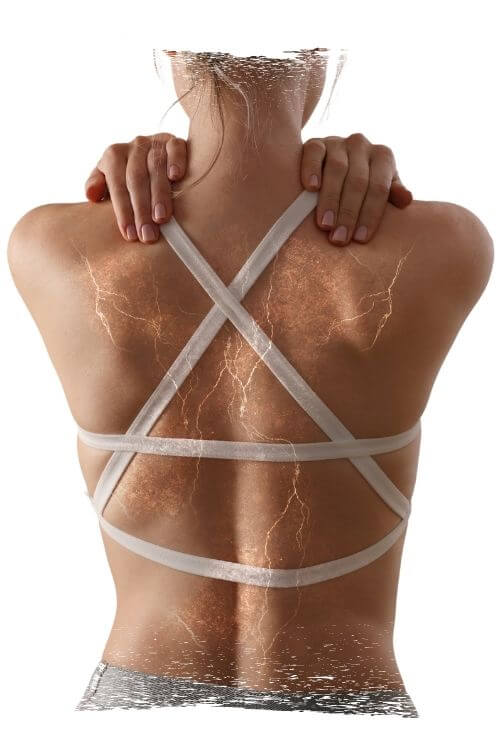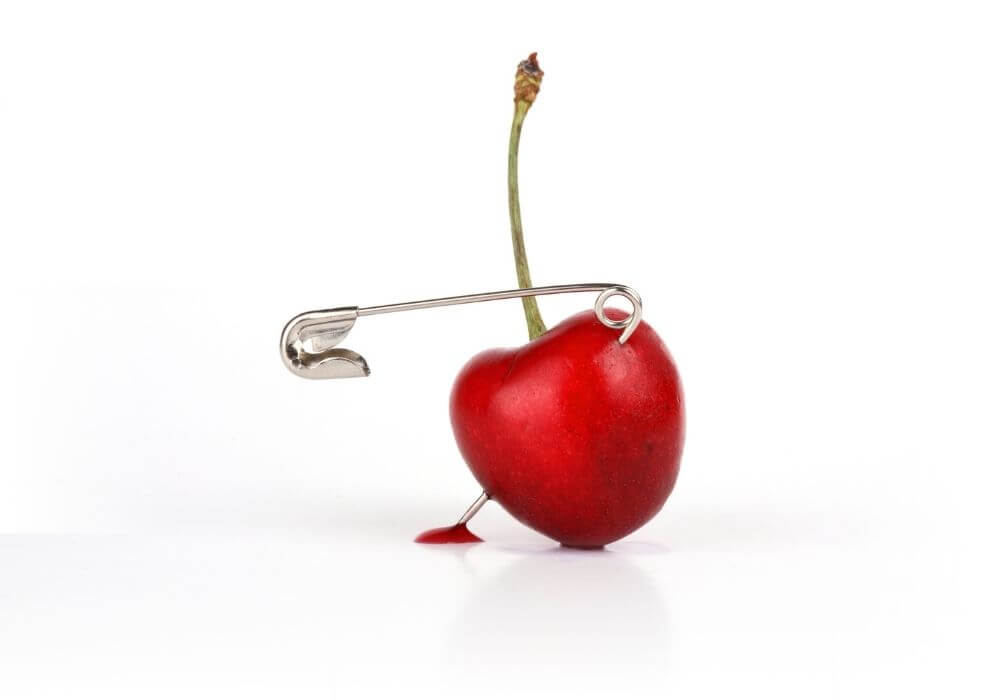Explore chronic pain.
Medically speaking…
Medically speaking, pain is an uncomfortable sensation that usually signals an injury or illness, therefore the most known to people there are acute and chronic pain.
But that’s not all, there are 5 types of pain:
- Acute
- Chronic
- Neuropathic
- Nociceptive
- Radicular
If you want to learn more about these types, I invite you to read our acute vs chronic pain article.
Chronic pain is longer in duration than acute pain (a cut or broken leg). It can be constant or irregular, but it always comes back.
Chronic pain is considered when continuing over many months or years. Such pain occurs often due to a health condition, such as arthritis, endometriosis, fibromyalgia, or even a spine condition.
We focus on this kind of pain because it is often one of the main symptoms of chronic illness.

Chronic pain affects roughly 100 million American adults alone. This number is bigger than heart disease, cancer, and diabetes combined!
The estimated annual cost is of medical treatment is about $500-600 billion in the U.S. alone.
But let’s not forget that there is a large population of people missing in this equation – children. So by adding pediatric patients as well, the cost of treatment grows much higher.
Chronic pain is something that really needs to be addressed because of the fact that your partner suffers from it. Pain is a symptom of chronic illness but chronic pain itself has symptoms that include:
- Sharp or stabbing feeling.
- A burning sensation.
- A dull muscular ache.
- Numbness.
- Sensitivity to touch.
- Skin changes.
- Swelling.
- Weakness
Everyone experiences occasional aches and pains. That’s just a part of life. Sudden, acute pain is an important reaction of your nervous system that helps alert you of possible damage to your body.
When an injury occurs, pain signals travel from the injured area up to your spinal cord and to your brain. It all takes a split of a second.
If you didn’t experience pain, the damage that occurs expands and takes a more severe form. It could even lead to death.
Imagine being bitten by a snake. If you don’t feel the bite, your body gets poisoned, ultimately leading to death.
So, pain is your friend my friend!
You mustn’t treat pain like your enemy. Pain isn’t pleasant but is good for your overall health.
Types of chronic pain:
Some of the most common types of chronic pain include:
- Migraine headache.
- Postsurgical pain.
- Post-trauma pain.
- Lower back pain.
- Cancer pain.
- Arthritis pain.
- Pain caused by nerve damage (neurological).
- Pain that isn’t caused by disease, injury, or nerve damage (psychogenic).
What causes chronic pain?
Let’s put aside acute pain because we talk about chronic pain, not injury, although this kind of pain may be caused by an initial injury.
In some cases the nerve damage that occurs during such injury makes the pain more intense and long-lasting, often changing into chronic pain.
The exact causes of chronic pain without injury aren’t really understood.
Pain may sometimes be a result of underlying health conditions, such as the ones my wife suffers from.

Endometriosis (a painful disorder affecting 1 in 10 women around the world, which occurs when the uterine lining grows outside of the uterus.
Fibromyalgia (widespread pain in the bones and muscles).
IBS (a condition that causes painful inflammation in the digestive tract).
But there are also other health conditions that are the cause of chronic pain:
Chronic fatigue syndrome, also known as M.E. (characterized by extreme, prolonged tiredness which is accompanied by pain).
Interstitial cystitis (a disorder causing bladder pressure and pain).
Vulvodynia (a chronic vulva pain that occurs without an obvious reason).
Over time, your brain learns to continue to put your body into a painful state, which repeats the pain cycle.
In other words, stress affects pain, and pain in return impacts stress. No pill will make stress go away, because stress often doesn’t come from you, but from the environment and actions of other people. Stress is just a part of life!

